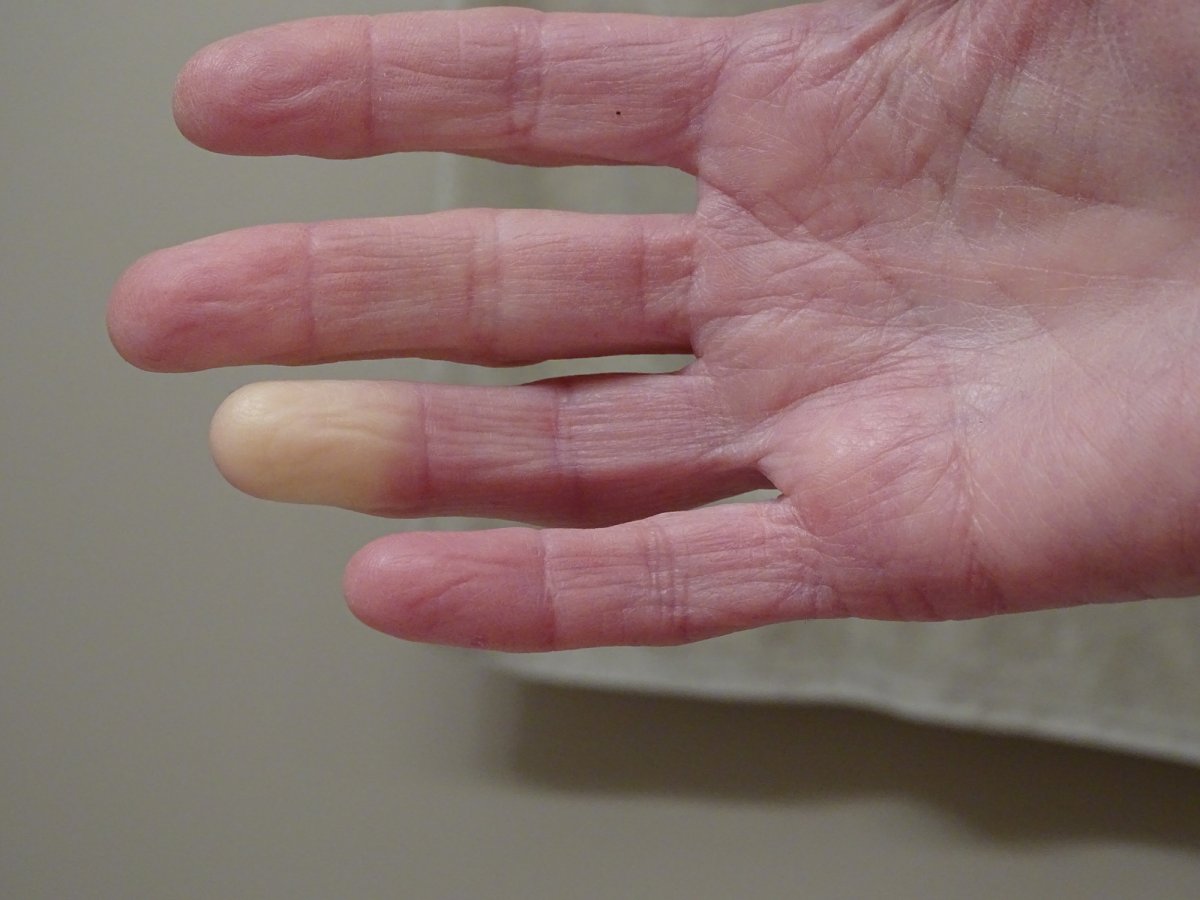It’s one thing to feel frozen on a cold winter day, but it’s another thing to feel cold throughout the year.

Many people suffer from cold hands and feet throughout the year, but why does this sensation even happen?
Dr. John You, a vascular surgeon at Scarborough Health Network in Toronto, tells Global News having cold hands and feet can fall into two categories: one is a lack of blood supply to these body parts, which can be a symptom of diabetes or other malignant diseases.
“The other one is more benign process when you get vasospasms, where the blood vessels constrict due to triggers,” You said.
Being cold, he said, is a very common trigger.
This can be the reason blood vessels in the hands, fingers and toes become smaller, and when they are restricted, people start to feel more cold.
But could it mean something else?
You says sometimes the problem can be more serious and could actually be a sign of Raynaud’s disease or Raynaud’s syndrome.
Raynaud’s disease can cause the loss of colour and numbness on fingers and toes. For some, their skin can turn purple, blue or red.
Raynaud’s can also affect blood vessels, experts say — specifically the small arteries that supply blood to the skin.
There are no statistics on how many Canadians have Raynaud’s, but You says it tends to be three to four per cent of the overall population.
He says women are more likely to have the disease.
“Our bodies are designed to help preserve heat during times of cold,” he said.
“Our vital organs are in the middle of our body … as a protective mechanism when the body becomes cold, the extremities have blood shunted away from them to preserve the blood flow to the core organs.”
For people with Raynaud’s, this response becomes exaggerated and they can feel a sense of numbness or coldness all year-round.
‘I have to be more careful’
Kate Atherley, 51, is a knitwear designer and author based in Toronto. She was diagnosed with Raynaud’s disease in her 30s and has a few attacks a day.
Atherley says when she is triggered, her hands and feet become extremely cold. She feels a sense of numbness, as well.
“It’s really visible when there’s an attack, my hands go white,” she said. “Even now, my little finger is dead white.”
But as she gets older, she says, it is becoming worse.
“I have to be more careful,” she said. “Come October, I have two pairs of wool socks on … until April.”
Atherley wears fingerless mittens at home, as well as two pairs of socks. Simple things like going to the grocery store, washing her hands with cold water or even cooking a meal can be a challenge.
“Even in the summer at the grocery store, going in the fridge or freezer can trigger an attack.”
Taking care of cold hands, feet
You says most people don’t have Raynaud’s disease and often, it’s just a circulation issue.
For Chanakya Ramdev, founder and CEO of Sweat Free, he started to notice how cold his hands felt when he moved to Canada from India.
While he didn’t formally see a doctor for his symptoms, he did notice how cold his hands were at work, which often made it hard to shake hands with people.
For some people, including Ramdev, having cold hands and feet can just be a passing experience, often due to cold temperatures, You says.
But if your symptoms are those of Raynaud’s disease or if they begin to impact your everyday life, you should make time to see a doctor.
“We have to distinguish between generally feeling cold like we all do when winter weather comes along and feeling cold in the summertime.”

He says you can also try seeing a vascular specialist if symptoms continue.
For Raynaud’s disease in particular, there is no ideal treatment, he says, and a lot of patients end up managing on their own.
This means addressing your triggers (for most people, it’s cold weather) and keeping your core body temperature warm (not just hands and feet).
“Beyond that there are some medications that can dilate the blood vessels, causing improvement to the blood flow.”
He says for some, there are also surgical interventions that look at the blood vessels. But for the majority of Canadians, being cold all the time isn’t a big health issue.
“The majority of us who have cold hands, especially during the wintertime, it’s benign,” he said.
“It’s just a regular response to the cold.”
— with files from The Canadian Press







Comments